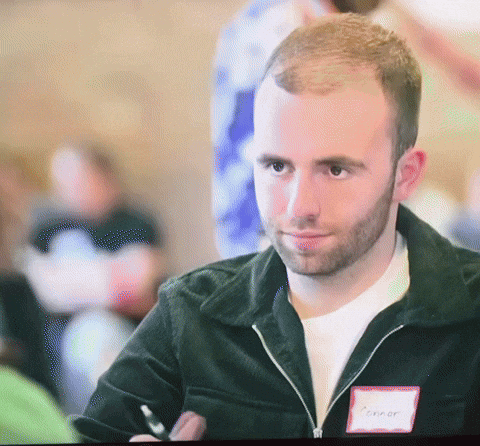How to Tell If You Are Neurodivergent: Understanding Neurodiversity
Talk Nerdy To Me’s: @StaffWriter
Navigating the complexities of the human brain can be a fascinating journey, especially when considering the concept of neurodiversity. This article serves as a guide to understanding neurodivergence, exploring its various facets, and helping you determine if you might be a neurodivergent individual. We'll delve into the defining characteristics, address common misconceptions, and shed light on the beauty of cognitive variation that enriches our world.
What Does It Mean to Be Neurodivergent?
Defining Neurodivergence
The term neurodivergent refers to variations in brain function and neurological structure. It encompasses a wide range of conditions, including autism spectrum disorder, attention deficit hyperactivity disorder (ADHD), dyslexia, and dyspraxia, among others. Judy Singer, an Australian sociologist, is credited with popularizing the term neurodiversity, which celebrates the natural diversity of the human brain. The idea of neurodiversity challenges the notion that there is one "normal" or "correct" way for the brain works. Instead, it recognizes that neurological differences are a natural part of the human experience. Understanding the core definition of neurodivergence is the first step in recognizing its presence in yourself or others. Neurodivergence should not be viewed as a deficit but as a different way of processing information and interacting with the world.
Characteristics of Neurodivergent Individuals
People who are neurodivergent exhibit a diverse array of characteristics, often differing significantly from neurotypical individuals. These characteristics can manifest in various ways, affecting social interactions, learning styles, sensory processing, and communication. For instance, autistic people may display repetitive behaviors or have difficulty with nonverbal communication, while individuals with ADHD might struggle with hyperactivity and maintaining attention. Learning disabilities like dyslexia can impact reading and writing skills. It's crucial to remember that not all neurodivergent people share the same traits, and the intensity of these characteristics can vary greatly. Recognizing these diverse manifestations of neurological differences is essential for fostering understanding and accommodation. These differences can also be strengths, offering unique perspectives and skills.
Common Misconceptions about Neurodiversity
Numerous misconceptions surround neurodiversity, often stemming from a lack of understanding or reliance on stereotypes. One common misconception is that all neurodivergent people have intellectual disabilities or that autism and developmental delays always co-occur. While some neurodivergent individuals may face intellectual challenges, many possess average or above-average intelligence. Another misconception is that neurodivergence is a condition like a disease that needs to be cured. The neurodiversity movement advocates for acceptance and support, rather than seeking to "fix" neurological differences. Some mistakenly believe that all children with autism are nonverbal. Addressing these misconceptions is vital for promoting inclusivity and ensuring that neurodivergent children and adults receive the support and understanding they deserve. It is important to acknowledge neurodivergence as a different way the brain works, rather than a deficit that needs correction.
Types of Neurodivergence
Understanding Autism and Its Spectrum
Autism Spectrum Disorder is perhaps one of the most widely recognized types of neurodivergence. It's important to understand that autism is not a monolithic entity but rather exists on a spectrum. This means being neurodivergent related to autism can range from individuals who require significant support in their daily lives to those who are highly functional and independent. People with autism may exhibit a variety of characteristics, including challenges with social communication and interaction, repetitive behaviors, and sensory sensitivities. However, it is equally important to acknowledge the strengths that autistic people often possess, such as exceptional attention to detail, specialized interests, and unique problem-solving abilities. The neurodiversity movement emphasizes the acceptance and celebration of these differences, advocating for accommodation and support that allows autistic individuals to thrive.
Other Forms of Neurodivergence
Beyond autism spectrum disorder, several other conditions fall under the umbrella term of neurodivergence. Attention deficit hyperactivity disorder (ADHD) is another common form, characterized by difficulties with attention, hyperactivity, and impulsivity. Dyslexia and dyspraxia are learning disabilities that impact reading, writing, and motor skills, respectively. It is also important to recognize that neurodivergence can encompass other conditions, and individuals can experience co-occurring neurodivergent conditions. Each of these types of neurodivergence presents its own unique set of challenges and strengths. People who are neurodivergent can find success and fulfillment when their needs are understood and supported. The idea of neurodiversity promotes a shift in perspective, moving away from viewing these differences as deficits and towards recognizing them as variations in brain function.
Comparing Neurodivergent Traits Across Different Types
While different types of neurodivergence have distinct diagnostic criteria, there can be overlapping traits among them. For instance, sensory sensitivities are common in both autism and ADHD, and difficulties with executive function can be observed across various neurodivergent conditions. Understanding these commonalities and differences is crucial for accurate identification and effective support. It's also important to avoid generalizations. Not all people with autism share the same traits, and the manifestation of ADHD can vary significantly from person to person. A nuanced approach that considers the individual's unique profile of strengths and challenges is essential. The focus should be on providing tailored accommodation and interventions that address specific needs, rather than relying on broad-stroke assumptions based on a particular diagnosis. People whose brain works differently and that should be recognized.
Recognizing Neurodivergent Traits in Yourself
Self-Assessment Techniques
If you suspect you might be neurodivergent, employing self-assessment techniques can be a helpful starting point. These techniques might include reflecting on your life experiences, paying attention to patterns in your behavior, and considering how you interact with the world around you. Online questionnaires and checklists designed to identify traits associated with autism or ADHD can also provide valuable insights - like this one from Embrace-Autism.
Consider journaling about situations that cause you particular stress or joy, as these experiences can highlight differences in sensory processing or social understanding. The goal is to gather as much information as possible about how your brain works and how it compares to what is considered neurotypical.
Common Signs of Neurodivergent Behavior
Recognizing common signs of neurodivergent behavior is crucial in understanding yourself. For example, you might find yourself experiencing sensory overload in environments that others find comfortable, indicating potential sensory sensitivities often associated with autism. Difficulties with executive function, such as planning and organization, could be a sign of ADHD. Strong, focused interests or repetitive behaviors are also common in autistic people. Social difficulties, such as struggling to understand social cues or feeling awkward in social situations, can also be indicative of neurodivergence.
The Role of Self-Diagnosis
Self-diagnosis plays a particularly important role, especially for women and adults who may have been overlooked during childhood due to outdated diagnostic criteria or gender biases. Many women on the autism spectrum, for example, often mask their symptoms or internalize their struggles, making traditional diagnosis more difficult. Self-reflection, research, and careful observation of your patterns can help identify traits that resonate with neurodivergent profiles.
While professional evaluation is valuable, self-diagnosis empowers individuals to validate their experiences and seek appropriate accommodations or support. It can be the first step in understanding oneself, advocating for needs, and connecting with communities of like-minded individuals. For women and others historically underdiagnosed, self-diagnosis can open doors to self-awareness, acceptance, and community engagement.
Neurodivergent Children: Signs and Support
Identifying Traits in Children
Recognizing neurodivergence in children can be a crucial step in providing timely and appropriate support. Pay close attention to developmental milestones, social interactions, and learning patterns. Children with autism spectrum disorder may exhibit repetitive behaviors, difficulties with nonverbal communication, or intense fixations on specific interests. Those with ADHD might struggle with hyperactivity, impulsivity, and maintaining attention in school. Dyslexia and dyspraxia, other forms of neurodivergence, can manifest as difficulties with reading, writing, or motor skills. Early identification allows for tailored interventions that can help neurodivergent children thrive and reach their full potential. The term neurodiversity should be understood as a way to normalize the way the brain works differently and that these children with autism or neurodivergent children are no less than neurotypical ones.
Supporting Neurodivergent Children in Everyday Life
Supporting neurodivergent children requires a multifaceted approach that addresses their individual needs. Creating a structured and predictable environment can be beneficial for those with autism, while providing opportunities for movement and breaks can help children with ADHD. Accommodation in the classroom, such as extended time on tests or preferential seating, can also improve academic success. Encourage open communication and create a safe space for children to express their feelings and challenges. Celebrate their strengths and unique talents, fostering a sense of self-worth and confidence. Remember that the goal is not to "fix" their neurodivergence but to empower them to navigate the world on their own terms. Neurodiversity movement helps people with autism and autistic people.
Resources for Parents and Caregivers
Navigating the world of neurodivergence can be overwhelming, and parents and caregivers need access to reliable resources. Numerous organizations offer information, support groups, and educational materials about autism, ADHD, dyslexia, and other neurodivergent conditions. Parent training programs can provide valuable strategies for managing challenging behaviors and promoting positive development. Online communities and forums offer a space for parents to connect with others who understand their experiences and share advice. Additionally, consulting with therapists, psychologists, and educational specialists can provide individualized guidance and support. There are many resources available to help parents advocate for their children with autism and ensure they receive the appropriate services and accommodation. All neurodivergent individuals have a place in this world. Do not see being neurodivergent as a deficit.
Embracing Neurodiversity in Society
The Importance of Understanding Neurodiversity
Understanding neurodiversity is paramount for creating a more inclusive and equitable society. Recognizing that variations in brain function are a natural part of the human experience challenges the notion that there is only one "normal" way of thinking and behaving. Embracing neurodiversity means valuing the unique perspectives and talents that neurodivergent people bring to the table. It promotes empathy, acceptance, and a shift away from pathologizing differences. By understanding neurodivergence, we can create environments that are more accessible and supportive for everyone, not just neurotypical individuals. The idea of neurodiversity helps understand what it means to be neurodivergent.
Advocacy and Support for Neurodivergent People
Advocacy plays a crucial role in promoting the rights and well-being of neurodivergent people. People with autism or other developmental disorders may need support. This includes advocating for accessible education, employment opportunities, and healthcare services. Self-advocacy is also essential, empowering neurodivergent people to speak up for their needs and preferences. Support groups and peer mentoring programs can provide a sense of community and belonging, fostering self-esteem and resilience. Raising awareness about neurodiversity and challenging stigma are also important aspects of advocacy. Judy Singer started this and everyone should continue to talk about neurodiversity and neurodivergence.
Creating Inclusive Environments
Creating inclusive environments requires a conscious effort to design spaces and systems that accommodate the diverse needs of neurodivergent people. This might involve providing sensory-friendly environments with reduced noise and lighting, offering clear and concise communication, and allowing for flexible work arrangements. In educational settings, it's important to implement differentiated instruction and provide accommodation that support individual learning styles. Employers can create inclusive workplaces by providing training on neurodiversity and implementing policies that promote accessibility and accommodation. By proactively creating inclusive environments, we can ensure that people who are neurodivergent have the opportunity to thrive and contribute their unique talents to society. If you have autism and neurodiversity do not let that bring you down.


